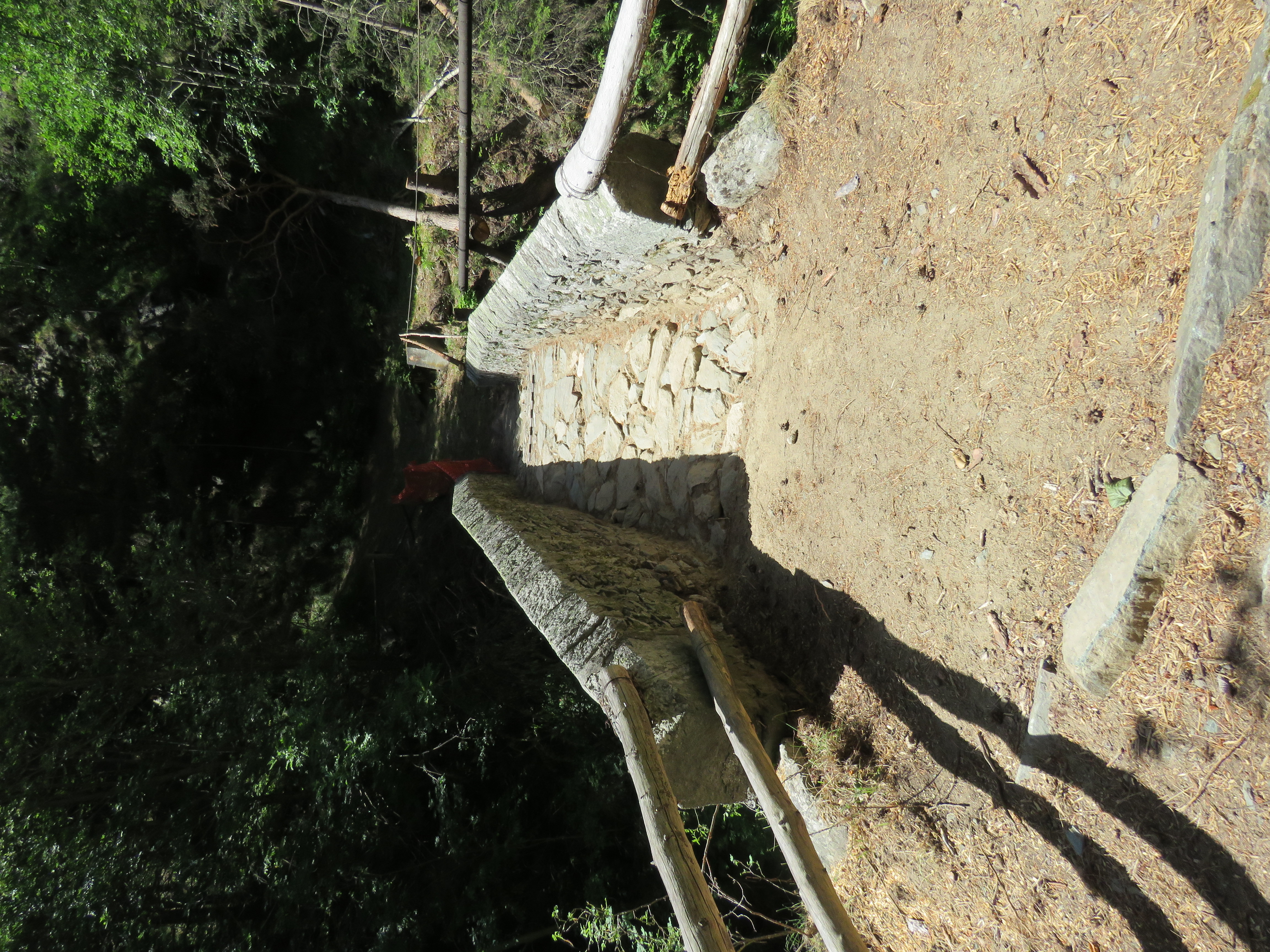07/07/2023 | Partner: Regione Valle d'Aosta
The “Pont-de-Péra” Bridge
Suddenly it appears before those who venture into the valley, crossing a small freshwater gorge.
Located at the entrance to the small Chasten valley, the Pont-de-Péra (stone bridge) makes it possible to cross the narrow gorge formed by the stream of the same name and reach the high mountain pastures. A dense vegetation all around surrounds the gorge hiding the small bridge from view until the last moment with bold architecture.

Context
Reachable in a few minutes from the village of Tollégnaz, the Pont-de-Péra crosses the Chasten stream, allowing you to continue to the small votive aedicula dedicated to the Virgin and to the mountain and summer pastures.
Thanks to the bridge it is possible to move to the opposite side of the valley, easily overcoming an area that has always been dangerous and subject to landslides.
History
Its name, Pont-de-Péra, immediately recalls the material with which it was made, namely the stone.
No historical source mentions it, leaving the enigma about the date of its foundation, as well as the possible presence of a previous structure in another material, unsolved. Certainly, the toponym suggests the importance and uniqueness linked to the building material at a time when these structures were normally made of wood. Observing the bridge, you may notice how it has been repeatedly subject to renovations and repairs over the centuries, in order to keep it constantly functional to reach the summer pastures.
Although without certain data, some scholars believe it was possible that it was managed by a political association of aristocratic families (probably that of Tollégnaz), namely an institution particularly lively in the mountain territories such as the Val d’Ayas, which, among its tasks, had to manage the minor bridges, as it happened for other structures present on the Challand territory.
Architecture
Founded directly on the rocky walls of the narrow gorge, the single arch Pont-de-Péra bridge crosses the stream with its arch set on two piles that adapt to the different altitude of the two banks.
During the maintenance work, to prepare for the execution of the surveys and the installation of the structural monitoring system provided for by the Salvaguardare/Sauvegarder project, it was possible to highlight the original flooring consisting of stone slabs. To protect passers-by, the bridge still boasts characteristic parapets finished by handrails in lithic blocks featuring double slopes.


